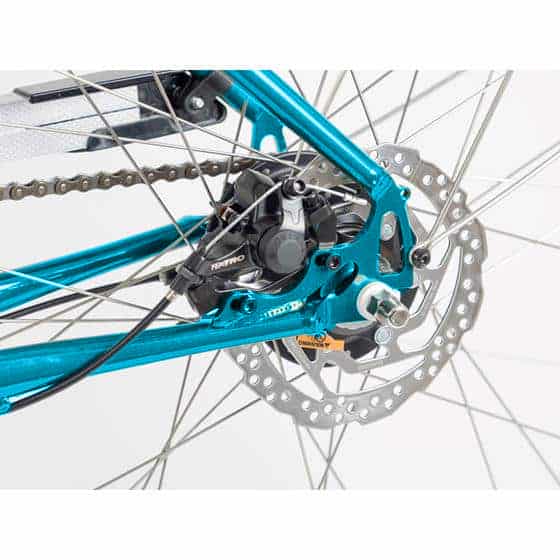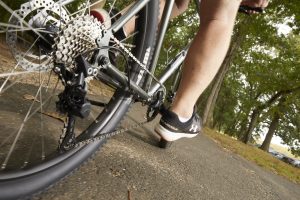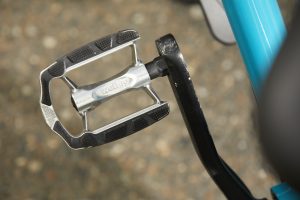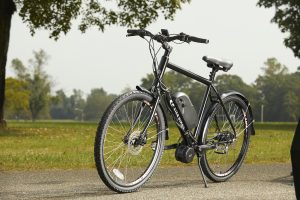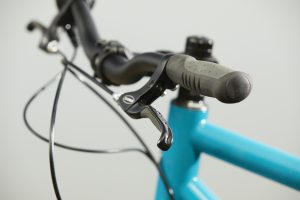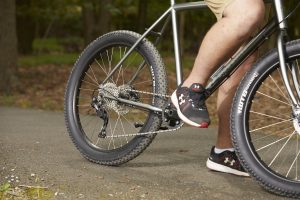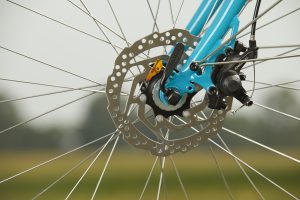Braking–Front, Rear or Both?
Since your bike has two brakes, one for each hand, if you want to stop as safely as possible, you need to pay attention to how you use each of them. Here are some Braking and Turning Tips for yor.
Conventional Wisdom
Conventional wisdom says to use both brakes at the same time. This is probably good advice for beginners, who have not yet learned to use their brakes skillfully, but if you don’t graduate past this stage, you will never be able to stop as short safely as a cyclist who has learned to use the front brake by itself.
Maximum Deceleration–Emergency Stops
The fastest that you can stop any bike of a normal wheelbase is to apply the front brake so hard that the rear wheel is just about to lift off the ground. In this situation, the rear wheel cannot contribute to stopping power, since it has no traction.
Won’t I Go Over The Bars?
The rear brake is O.K. for situations where traction is poor, or for when your front tire blows, but for stopping on dry pavement, the front brake alone provides the maximum stopping power, both in theory and in practice. If you take the time to learn to use the front brake correctly, you will be a safer cyclist.
Many cyclists shy away from using the front brake, due to fear of flying over the handlebars. This does happen, but mainly to people who have not learned to modulate the front brake.
The cyclist who relies on the rear brake for general stopping can get by until an emergency arises, and, in a panic, he or she grabs the unfamiliar front brake as well as the rear, for extra stopping power. This can cause the classic “over the bars” crash.
Jobst Brandt has a quite plausible theory that the typical “over-the-bars” crash is caused, not so much by braking too hard, but by braking hard without using the rider’s arms to brace against the deceleration: The bike stops, the rider keeps going until the rider’s thighs bump into the handlebars, and the bike, which is no longer supporting the weight of the rider, flips.
This cannot happen when you are using only the rear brake, because as soon as the rear wheel starts to lift, the rear wheel skids, limiting its braking force. Unfortunately, though, it takes twice as long to stop with the rear brake alone as with the front brake alone, so reliance on the rear brake is unsafe for cyclists who ever go fast. It is important to use your arms to brace yourself securely during hard braking, to prevent this. Indeed, the good technique involves moving back on your saddle as far as you can comfortably go, to keep the center of gravity as far back as possible. This applies whether you are using the front, rear, or both brakes. Using both brakes together can cause “fishtailing.” If the rear wheel skids while braking force is also being applied to the front, the rear of the bike will tend to swing past the front, since the front is applying a greater decelerating force than the rear. Once the rear tire starts to skid, it can move sideways as easily as forward.

